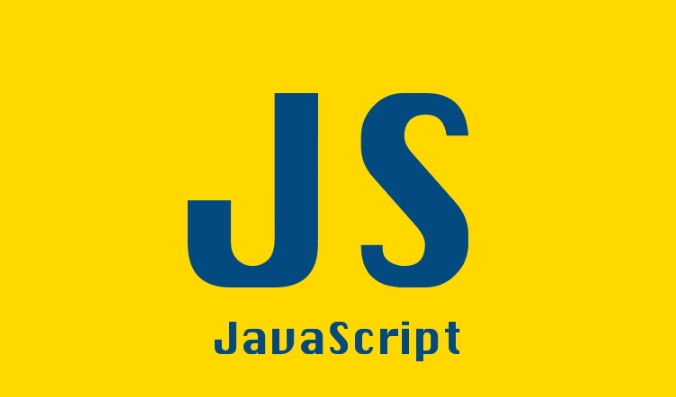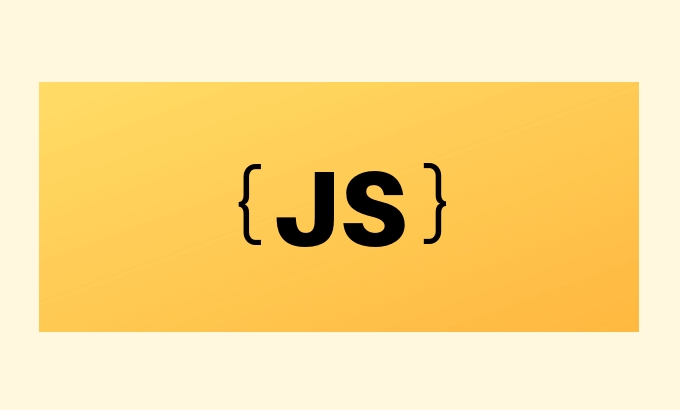 Web Front-end
Web Front-end
 JS Tutorial
JS Tutorial
 Mastering JavaScript Concurrency Patterns: Web Workers vs. Java Threads
Mastering JavaScript Concurrency Patterns: Web Workers vs. Java Threads
Mastering JavaScript Concurrency Patterns: Web Workers vs. Java Threads
There is an essential difference between JavaScript's Web Workers and Java Threads in concurrency processing. 1. JavaScript adopts a single-thread model. Web Workers is an independent thread provided by the browser. It is suitable for executing time-consuming tasks that do not block the UI, but cannot operate the DOM; 2. Java supports real multithreading from the language level, created through the Thread class, and is suitable for complex concurrent logic and server-side processing; 3. Web Workers use postMessage() to communicate with the main thread, which is highly secure and isolated; Java threads can share memory, so synchronization issues need to be paid attention to; 4. Web Workers are more suitable for front-end parallel computing, such as image processing, while Java Threads is suitable for back-end high-concurrency scenarios, such as database connection and task scheduling; 5. Web Workers are more secure, debugging is relatively simple, and Java multi-thread debugging is complex, which is prone to deadlocks and race conditions.

The design ideas of JavaScript and Java in concurrent processing are completely different. Although both can implement multi-threading or similar multi-threading behaviors, their underlying mechanisms and applicable scenarios are very different. If you are a front-end developer or full-stack developer, figuring out the difference between JavaScript's Web Workers and Java's Threads will help you choose the right technology in the right scenario.

The following is a few practical perspectives to help you clarify the key points of these two concurrent models.
The essence of concurrency mechanism is different
JavaScript was originally a single-threaded language, and in order not to block the main thread, it introduced event loops and asynchronous programming models. Web Workers is a "multi-threaded" solution that appears in a browser environment to solve the impact of time-consuming tasks on page response, but in fact each Worker is an independent thread and cannot directly access the DOM.

Java supports real multi-threading from the language level. Create new threads through Thread class, and can directly utilize CPU multi-core resources, which is suitable for complex background computing, server-side concurrent processing and other scenarios.
Simply put:

- Web Workers : Lightweight threads in the browser, suitable for performing time-consuming JS calculations
- Java Threads : System-level threading, suitable for complex concurrent logic and server applications
Comparison of usage and communication mechanism
Web Workers are restricted in many usage, but they are highly secure and isolated.
You can't operate the DOM in Worker or call certain browser APIs (such as alert() ), but it can communicate with the main thread via postMessage() .
// Create a worker in the main thread
const worker = new Worker('worker.js');
worker.postMessage('Hello from main thread');
worker.onmessage = function(event) {
console.log('Received:', event.data);
} Worker content is usually placed in a separate file, such as worker.js :
onmessage = function(event) {
console.log('Worker received:', event.data);
postMessage('Processed result');
}Java Threads is more flexible, but more prone to errors
There are many ways to create threads in Java, the most common one is to inherit Thread class or implement the Runnable interface.
class MyThread extends Thread {
public void run() {
System.out.println("Running in a separate thread");
}
}
public class Main {
public static void main(String[] args) {
MyThread t = new MyThread();
t.start();
}
} Java threads can share memory, so synchronization issues need to be considered, such as using synchronized keywords or Lock interfaces to avoid race conditions.
Performance and applicable scenarios
Web Workers are more suitable for parallel computing in browser environments
- Such as image processing, data encryption, AI reasoning, etc.
- It won't block UI rendering, and the user experience is better
- However, it cannot be created and destroyed frequently, and the overhead is relatively large
Java Threads is more suitable for high concurrency server programs
- Make full use of multi-core CPU resources
- Support thread pool management to improve performance and stability
- Suitable for handling back-end scenarios such as database connections, network requests, and task scheduling.
It should be noted that too many Java threads will lead to a large context switching overhead and affect performance. Therefore, it is usually recommended to use it in conjunction with thread pools instead of creating new threads every time.
Security and debugging difficulty
- Web Workers are more secure because they run in a standalone context and are not prone to memory leakage or deadlock.
- Due to shared memory, Java Threads is more complicated to debug and is prone to thread safety problems, such as deadlock, competition, resource competition, etc.
Debugging Web Workers can view the messaging situation in browser developer tools; Java multi-threaded debugging requires logging, thread dump analysis and other means.
Basically that's it. Web Workers and Java Threads each have their own advantages, the key lies in making reasonable choices based on the application scenario. The former is suitable for parallel tasks within the browser, while the latter is suitable for high-performance server development that requires fine control of thread behavior.
The above is the detailed content of Mastering JavaScript Concurrency Patterns: Web Workers vs. Java Threads. For more information, please follow other related articles on the PHP Chinese website!

Hot AI Tools

Undress AI Tool
Undress images for free

Undresser.AI Undress
AI-powered app for creating realistic nude photos

AI Clothes Remover
Online AI tool for removing clothes from photos.

Clothoff.io
AI clothes remover

Video Face Swap
Swap faces in any video effortlessly with our completely free AI face swap tool!

Hot Article

Hot Tools

Notepad++7.3.1
Easy-to-use and free code editor

SublimeText3 Chinese version
Chinese version, very easy to use

Zend Studio 13.0.1
Powerful PHP integrated development environment

Dreamweaver CS6
Visual web development tools

SublimeText3 Mac version
God-level code editing software (SublimeText3)
 Comparing Java Frameworks: Spring Boot vs Quarkus vs Micronaut
Aug 04, 2025 pm 12:48 PM
Comparing Java Frameworks: Spring Boot vs Quarkus vs Micronaut
Aug 04, 2025 pm 12:48 PM
Pre-formanceTartuptimeMoryusage, Quarkusandmicronautleadduetocompile-Timeprocessingandgraalvsupport, Withquarkusoftenperforminglightbetterine ServerLess scenarios.2.Thyvelopecosyste,
 Volume keys on keyboard not working
Aug 05, 2025 pm 01:54 PM
Volume keys on keyboard not working
Aug 05, 2025 pm 01:54 PM
First,checkiftheFnkeysettingisinterferingbytryingboththevolumekeyaloneandFn volumekey,thentoggleFnLockwithFn Escifavailable.2.EnterBIOS/UEFIduringbootandenablefunctionkeysordisableHotkeyModetoensurevolumekeysarerecognized.3.Updateorreinstallaudiodriv
 How to join an array of strings in Java?
Aug 04, 2025 pm 12:55 PM
How to join an array of strings in Java?
Aug 04, 2025 pm 12:55 PM
Using String.join() (Java8) is the easiest recommended method for connecting string arrays, just specify the separator directly; 2. For old versions of Java or when more control is needed, you can use StringBuilder to manually traverse and splice; 3. StringJoiner is suitable for scenarios that require more flexible formats such as prefixes and suffixes; 4. Using Arrays.stream() combined with Collectors.joining() is suitable for filtering or converting the array before joining; To sum up, if Java8 and above is used, the String.join() method should be preferred in most cases, which is concise and easy to read, but for complex logic, it is recommended.
 python logging to file example
Aug 04, 2025 pm 01:37 PM
python logging to file example
Aug 04, 2025 pm 01:37 PM
Python's logging module can write logs to files through FileHandler. First, call the basicConfig configuration file processor and format, such as setting the level to INFO, using FileHandler to write app.log; secondly, add StreamHandler to achieve output to the console at the same time; Advanced scenarios can use TimedRotatingFileHandler to divide logs by time, for example, setting when='midnight' to generate new files every day and keep 7 days of backup, and make sure that the log directory exists; it is recommended to use getLogger(__name__) to create named loggers, and produce
 How to compare two strings in Java?
Aug 04, 2025 am 11:03 AM
How to compare two strings in Java?
Aug 04, 2025 am 11:03 AM
Use the .equals() method to compare string content, because == only compare object references rather than content; 1. Use .equals() to compare string values equally; 2. Use .equalsIgnoreCase() to compare case ignoring; 3. Use .compareTo() to compare strings in dictionary order, returning 0, negative or positive numbers; 4. Use .compareToIgnoreCase() to compare case ignoring; 5. Use Objects.equals() or safe call method to process null strings to avoid null pointer exceptions. In short, you should avoid using == for string content comparisons unless it is explicitly necessary to check whether the object is in phase.
 python pandas styling dataframe example
Aug 04, 2025 pm 01:43 PM
python pandas styling dataframe example
Aug 04, 2025 pm 01:43 PM
Using PandasStyling in JupyterNotebook can achieve the beautiful display of DataFrame. 1. Use highlight_max and highlight_min to highlight the maximum value (green) and minimum value (red) of each column; 2. Add gradient background color (such as Blues or Reds) to the numeric column through background_gradient to visually display the data size; 3. Custom function color_score combined with applymap to set text colors for different fractional intervals (≥90 green, 80~89 orange, 60~79 red,
 Computed properties vs methods in Vue
Aug 05, 2025 am 05:21 AM
Computed properties vs methods in Vue
Aug 05, 2025 am 05:21 AM
Computed has a cache, and multiple accesses are not recalculated when the dependency remains unchanged, while methods are executed every time they are called; 2.computed is suitable for calculations based on responsive data. Methods are suitable for scenarios where parameters are required or frequent calls but the result does not depend on responsive data; 3.computed supports getters and setters, which can realize two-way synchronization of data, but methods are not supported; 4. Summary: Use computed first to improve performance, and use methods when passing parameters, performing operations or avoiding cache, following the principle of "if you can use computed, you don't use methods".
 Advanced Conditional Types in TypeScript
Aug 04, 2025 am 06:32 AM
Advanced Conditional Types in TypeScript
Aug 04, 2025 am 06:32 AM
TypeScript's advanced condition types implement logical judgment between types through TextendsU?X:Y syntax. Its core capabilities are reflected in the distributed condition types, infer type inference and the construction of complex type tools. 1. The conditional type is distributed in the bare type parameters and can automatically split the joint type, such as ToArray to obtain string[]|number[]. 2. Use distribution to build filtering and extraction tools: Exclude excludes types through TextendsU?never:T, Extract extracts commonalities through TextendsU?T:Never, and NonNullable filters null/undefined. 3






